Broughty Ferry waterfront has already undergone a dramatic overhaul…
but it could be set for a further, unwanted, transformation.
Using scientific data from Dynamic Earth,
we have shown how sea level rise
could shrink Broughty Ferry’s iconic sands in years to come.
We have also spoken to the people who constructed, and those who use, the new waterfront path to the west of the beach, built as part of the new sea wall.
Broughty Ferry flood defences
Between the Grassy Beach and Broughty Castle, £14 million flood defences have been installed to cope with a one in 200 year flooding event.
The usual vistas of the Ferry are going to be a distant memory.”
Local councillor Craig Duncan
Councillors approved plans to take action on Broughty Ferry’s crumbling sea defences in 2016.
And in 2020, after the plans were drawn up, Broughty Ferry residents were warned the project to keep the Tay Estuary from flooding homes would make their sea views a “distant memory”.
Those were the words of local Lib Dem councillor Craig Duncan.
“I also said back then that the option of doing nothing is simply not one that any responsible authority could take.”
He said the reaction of local people to the flood prevention scheme has been “overwhelmingly positive”.
And he believes it has improved the amenity, and safety, of the waterfront.
“People have to remember what was there before, which was a tiny wee concrete pavement.
“Parts of it had no railings at all. I nearly fell off there once.”
However, there have been teething problems.
Slippery algae on the steps at Beach Crescent has caused slips and falls. Hand rails have since been installed.
How the flood defences work
Matthew Sharpe is contracts manager at McLaughlin and Harvey – the contractors who built the sea wall.
He says he “couldn’t praise Broughty Ferry highly enough” for how residents had responded to the construction work.
“It was quite intrusive what we were doing. We weren’t just building a wall there, we were digging up the road and footpaths.”
The flood defences have an expected lifespan of 100 years.
And in an ideal world they would never be needed.
But flooding events are becoming more frequent so it is only a matter of time before Dundee City Council workers will need to close the shiny new floodgates.
Broughty Ferry’s sea wall
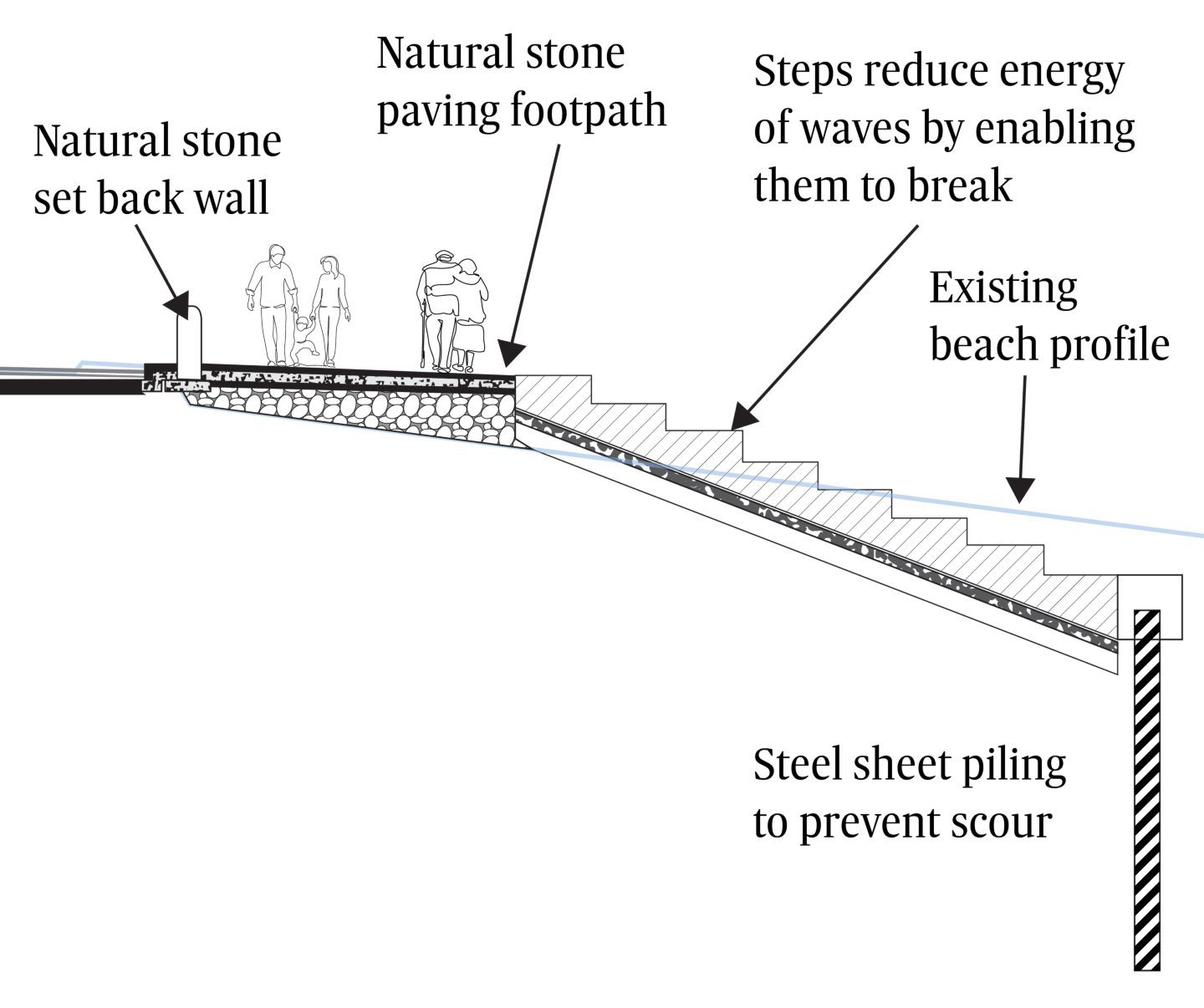
The sea wall is built for a one in 200 year flooding event.
But what does that mean?
It doesn’t mean flooding will happen just once in 200 years.
The interpretation is more complex. It means there is a 0.5% chance of a significant flood happening and it could happen more than once in a year.
At a metre high, the natural stone brick wall is set back from amphitheatre-style steps at Beach Crescent.
“On Beach Crescent, the steps act as a wave breaker,” says Matthew.
“The steps break up the waves, which helps on stormy days.”
At the bottom of the steps there is sheet piling – sheets of steel driven into the ground.
These steel sheets prevent “scouring” – the removal of material by the action of waves – which could compromise the flood defences.
At Douglas Terrace, concrete foundations have been used to guard against scour. This should prevent a repeat of what happened in February 2020, when the old sea wall collapsed.
The disappearing Broughty Ferry beach
Properties safely nestled behind the sea wall should be safe for now.
But changes are happening further along the coast, east of Broughty Castle.
Projected sea level rises could mean Broughty Ferry beach looks very different in years to come.
Carol McEwan is a digital artist who has captured Broughty Ferry beach on camera for her work.
Carol, 49, digitally enhances her images to make them look like paintings, and her creations are popular with tourists visiting Scotland.
She describes the prospect of the Ferry’s sands disappearing as “heartbreaking”.
“Broughty Ferry Beach is a special place that I have enjoyed visiting ever since I was a child and it’s so easy to take it for granted that it will always be there.
“It inspired me to create one of my first art prints as a reminder of home when I was living away from Dundee many years ago.
“It’s good that the council has already started with flood defence plans in the area but sadly, climate change will permanently alter so much of Scotland’s coastline.
“It is heartbreaking to think that we will lose a large portion of the beaches on the east coast which inspire me so much.
“I only hope urgent action can be taken before it is too late.”
Sand dunes a weapon in flood prevention
But maybe all is not lost for Broughty Ferry beach.
We have based our image on the worst case scenario. Cutting global carbon emissions could mean less beach lost.
Meanwhile, sand dune restoration – a ‘soft engineering’ solution to flood prevention – has been going on at the beach.
The move will help protect properties near the Esplanade from the rising tide.
But if the predictions are correct, familiar picture postcard views of the sands will inevitably become a thing of the past.
How are local people embracing the changes?
Cyclists Colin Macdonald and David Sawers, 71, approve of the work at the waterfront.
Colin, 61, of Carnoustie says: “I think overall it’s a great improvement and the council should be commended for this.
“It’s quite good that it’s mixed use for pedestrians and cyclists. People seem to have embraced it.”
Mum Angela Collins, 33, has lived in Broughty Ferry for eight years.
“I really like it personally because I’m now out walking with the pram quite a lot. Before it was a very narrow path to get along.
“On the whole, it’s much better.”
We also spoke to Londoner Judith Tomioka 59, on her first visit to the Ferry.
“We’re from London. Our son just moved here. As a visitor it just looks great.”
Credits
Words and interviews by Aileen Robertson
Visualisations by Chris Donnan
Graphics by Gemma Day
Scrollytelling by Emma Morrice, Joely Santa Cruz and Lesley-Anne Kelly
SEO by Jamie Cameron
Drone photography by Steve Brown
Photography by Kim Cessford
Special thanks to Dynamic Coast
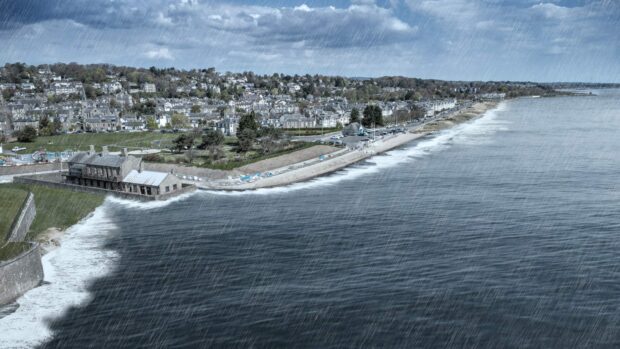
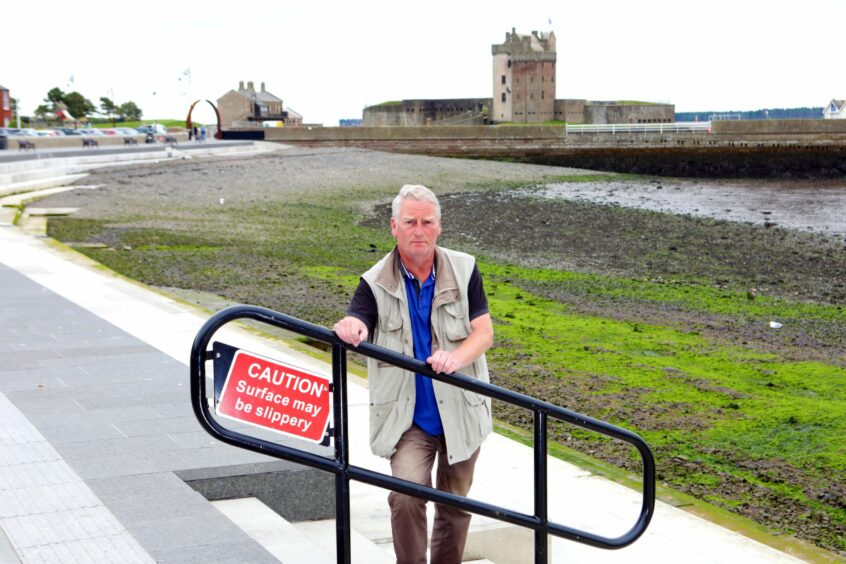
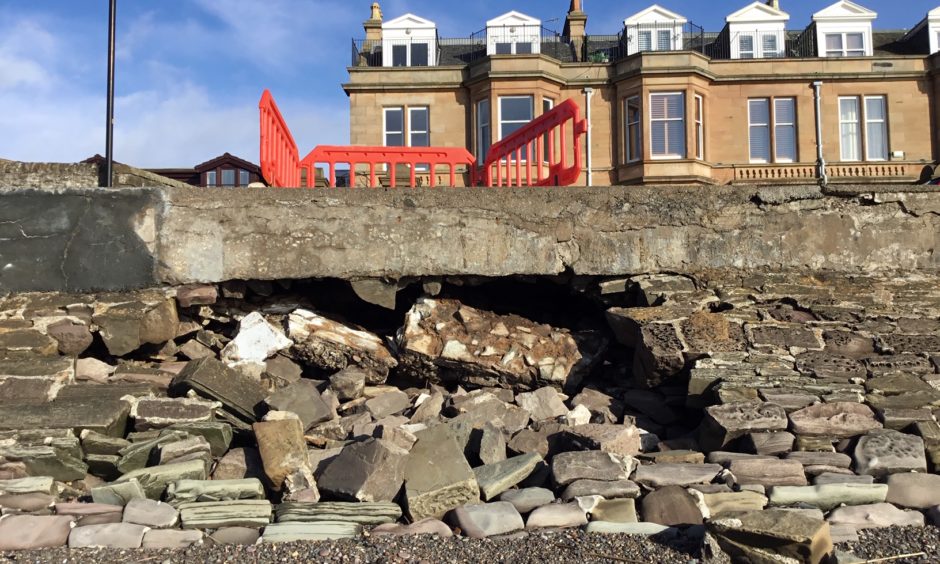
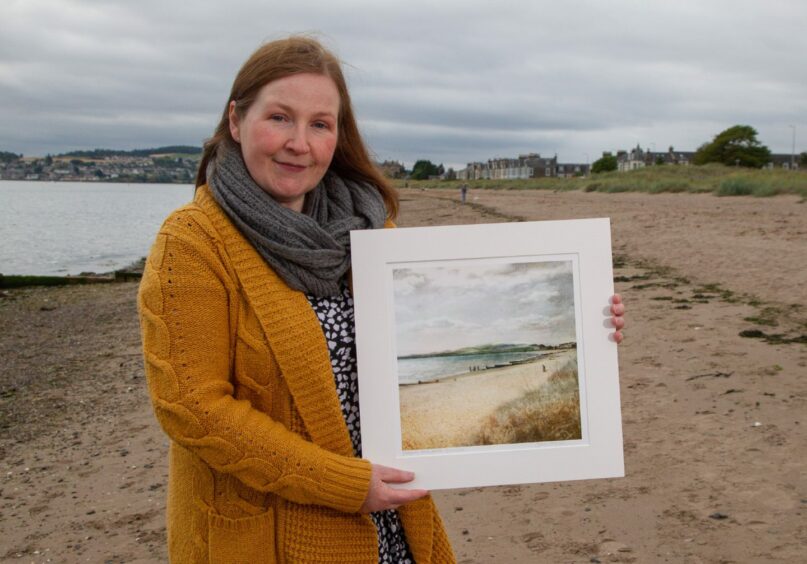
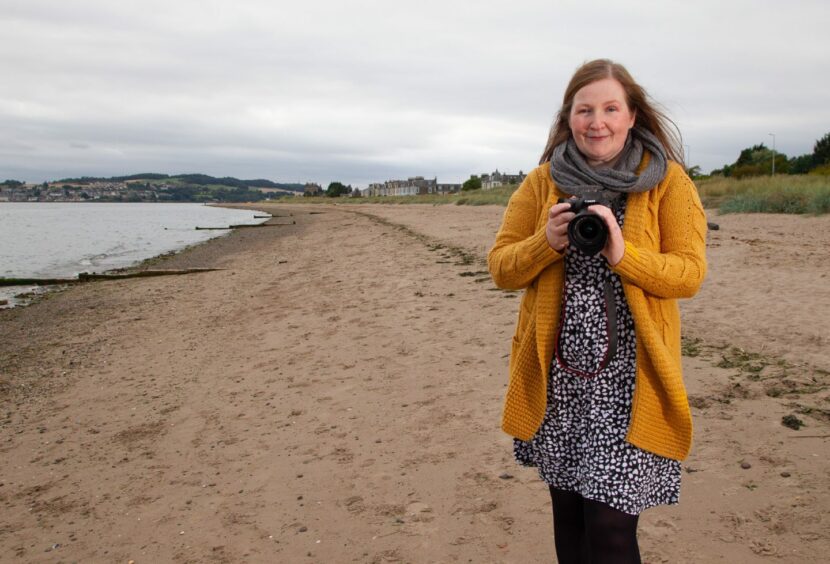
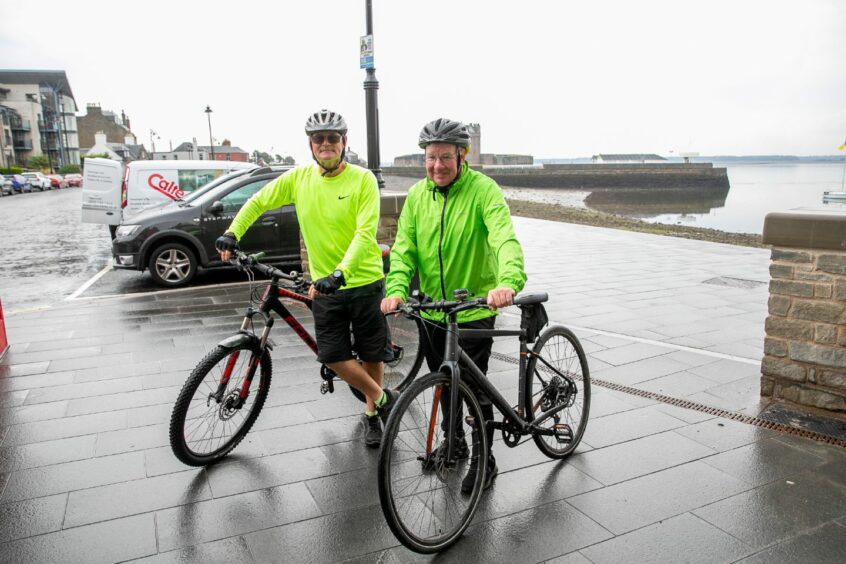
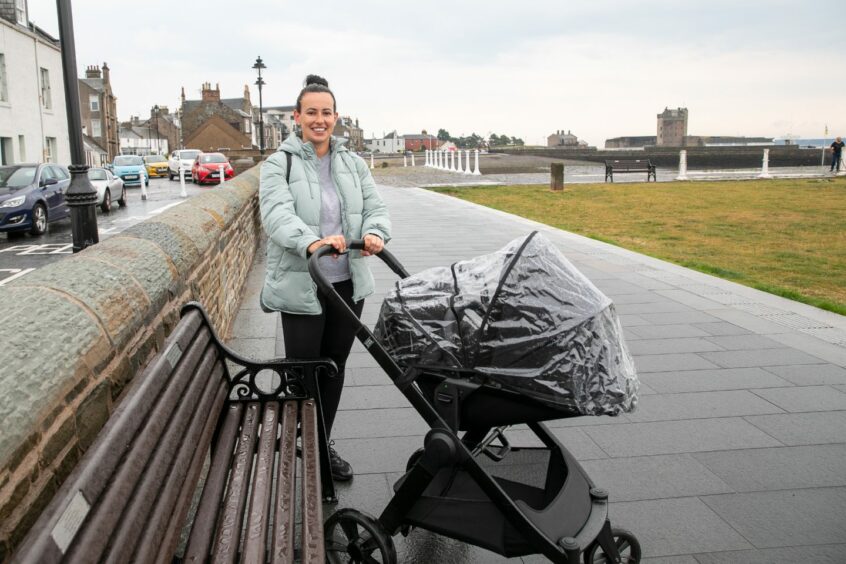
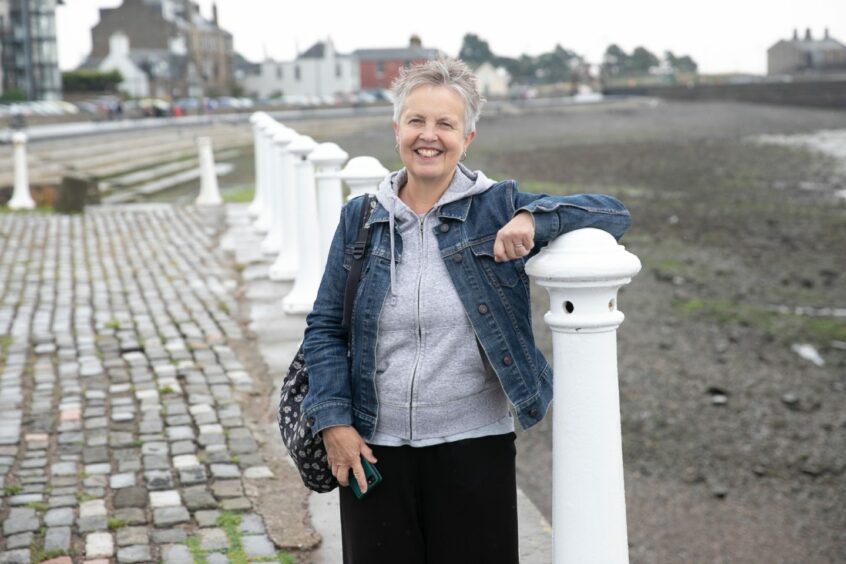








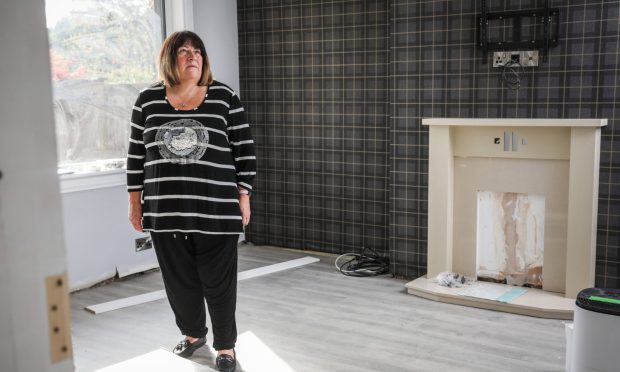
Conversation